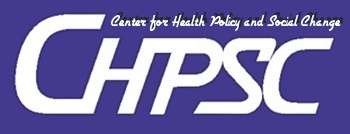share this post
Since the monetary crisis of 1997, Indonesia has also been suffering from various other crises. There has been an increase in horizontal conflict in several regions in Indonesia. Poverty, which is still a basic problem in many areas, has been exacerbated by the emergence of internally displaced populations resulting from these conflicts. The monetary crisis itself has weakened the ability of the government to fund health programs. In response to this, decentralization was considered one of the best ways out. With the Decentralization Law No. 22/1999, the prime responsibility for the planning and implementation of health programs including tuberculosis control was handed over to the district level. Internally Displaced Persons (IDPs) in the community and in IDP camps are at risk of tuberculosis due to poverty related factors and stressful life events.
This research aims to describe the health care access of internally displaced populations, particularly in terms of tuberculosis control, during the crisis and during the implementation of regional autonomy. It also aims to ascertain the cause of barriers to access, and to recommend interventions to reduce these inequities.
This is an observational study, with a qualitative and quantitative methodology. The research locations are Sampang and Bangkalan districts of East Java province. This population survey, with precision 2%, confidence interval of 95% and sample size of 136 tuberculosis suspects ascertained from a census, covers two groups, IDPs and non-IDPs. Other data collection strategies used were interviews with IDPs who have contracted tuberculosis, interviews with health staff from health facilities and health offices, and document review.
The prevalence of diagnosed tuberculosis and suspected tuberculosis did not differ between the IDP and non-IDP group. The tuberculosis suspects had lower access to medicines and medical examinations than those diagnosed with tuberculosis because they usually did not seek treatment until their disease had become severe. Quantitatively, the IDPs had a bigger possibility of obtaining access than did the non-IDPs. This is because in the refuge location many among the non-IDP population are also poor. However the inequity of access between IDPs and non IDPs can be seen from the average length of time the IDP group take before visiting health facilities after they feel the main complaint - 235 days, compared to only 22 days in the non-IDP group. Therefore evaluation of real access needs to consider when a person obtains that access. The problem of access for the IDP group is the delay between the onset of symptoms and diagnosis, which results in prolonged suffering and the increased possibility for the illness to be further spread within the over crowded IDP population who live in poorly ventilated homes. By controlling several of the free variables, it was discovered that in 1999 the time period between the onset of first symptoms until the access to medicine and health facilities depended on the level of stress. The higher the score for level of stress in 1999, the longer the period of time between main complaint until access to medicine and health services.
Although the health sector makes a positive contribution to regional income, development of the health sector is still a low priority compared to other sectors. And since decentralization, this can influence the size of the health development budget. In the two districts that were the research locations, the health budget was less than 8% of the total budget. Although it constitutes a health problem, tuberculosis is a low health priority in the research locations because other acute infectious diseases and maternal and infant mortality are considered to be more urgent. According to the guidelines for surveillance of IDP populations, health care for IDPs still focuses on acute diseases like upper respiratory tract infections or diarrhea, even though the acute phase has already passed. The health system is not yet able to diagnose and treat tuberculosis with the DOTS strategy in a consistent manner. The pattern of patients seeking treatment by changing providers is dependent on the availability of funds, and this has the potential to lead to a disruption in the tuberculosis treatment they are receiving. No changes were found in the financing and implementation of the tuberculosis control program from before decentralization up till now. Financing for the tuberculosis program until the time of this research was minimal in the two districts. It is difficult to conduct surveillance of tuberculosis because adequate data about the cases and treatment of tuberculosis is not available.
The hospitals and community health centres are already using the short-term 6 month treatment regimen, although the combination of medicines used is not always the same as the combination of medicines stated in the national guidelines. The main principle of DOTS, that is the supervision of medicine taking, is not yet done consistently in the two research locations. The reason for this is the distance of the patients’ houses from the health services, and also because they have not been able to involve the community or families in supervising patients when taking their medicine. The case studies of Sumadi and Tukirah show that patients’ adherence to treatment is influenced by social, economic and political factors and the structure of the health system which is difficult for patients to control. These factors include poverty, social deprivation in IDP and poor households, minimal information from health providers and variations within the health system when diagnosing and treating tuberculosis. Conducting sputum examination 3 times according to the procedure for diagnosing tuberculosis is actually viewed by many public and private health providers as being inefficient and difficult to carry out consistently.
This research recommends to donors and the government that it is still necessary to explore adaptations to the DOTS strategy for Indonesia so that it can be better and more consistently implemented. As well as developing a tuberculosis vaccine as a prevention effort, research is also needed to improve the form, frequency, amount, and packaging of anti tuberculosis drugs in order to further fulfill the needs of tuberculosis sufferers and to reduce non-adherence to drug regimens, such as with fixed drug combinations. Although sputum examination is currently the most cost effective method of diagnosis, it requires the competence of the staff and the sputum of the patients for three examinations. This is not always easy to do consistently, especially in remote, poor or inaccessible areas, of which there are many in the Indonesian archipelago. A method of diagnosis needs to be developed that is also cost effective but simpler and quicker, and more likely to be adhered to by medical staff and patients alike, especially in areas like those mentioned above.
To the government of the Republic of Indonesia it is also recommended that the policy direction be improved to enable the thorough management of IDPs through coordination with governments in the origin and destination areas. Management of assistance for IDPs needs to consider long-term empowerment including in terms of economic empowerment and education for the children of IDP families. It is important to improve the facilities and basic infrastructure like barracks, sanitation facilities and clean water in the refuge settlements because the repatriation of IDPs will not be possible in the near future. In order that the tuberculosis control program is not neglected as a result of decentralization, we need to ensure the political commitment of the regional governments and the direct funding of some parts of the program, like capacity building, medicines and equipment, by the central government. The system of recording and reporting of the tuberculosis control program needs to be simplified. The department of health needs to undertake monitoring, inspections and training consistently because of the turnover of health staff. Training here includes refresher training and training on innovations. Barriers to access for the poor, both IDPs and non-IDPs in terms of health costs must be addressed, for example by developing a system of health cover for IDPs.























Comments :
Post a Comment